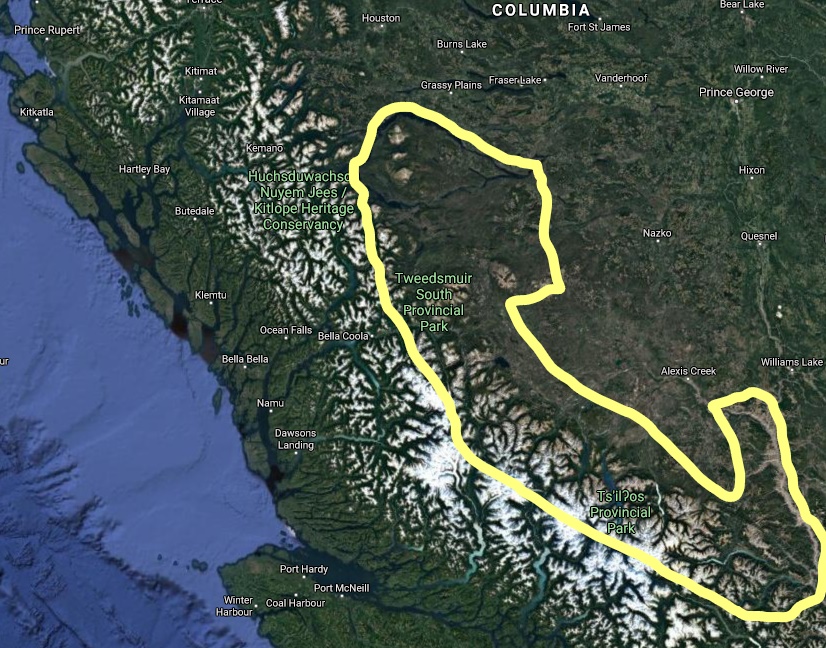The Chilcotin Ark is a 2.5 million hectare ecosystem complex in the Coast Mountains rain shadow in British Columbia. It has an altitudinal range from sea level to over 4,000 metres. BC’s highest mountain, Mount Waddington, is in its borders. The Chilcotin Ark contains 17 parks and protected areas such as Tweedsmuir Park, one of British Columbia’s largest parks.
12 of the 16 biogeoclimatic zones (major ecosystem types) of British Columbia are located in the Ark. 11 of 29 of North America’s big game species reside in the Ark. It is home to 100s of different bird species from hummingbirds to eagles, fish and mammals from rodents to woodland caribou, mountain goats and grizzly bears. The area has one of the highest diversity of major predators in North America.
The Chilcotin Ark is home to the healthiest white bark pine populations in Canada. One of the most isolated wild horse populations in North America lives within the Chilcotin Ark.
The Silverthrone, Waddington and Homathko glacier complex in the west of the Ark forms the biggest temperate ice field on Earth. The alpine in the western part of the Ark has the highest concentration of alpine lakes in North America. With the 4 major river systems that have their source here, this makes the Chilcotin Ark the largest water storage in western North America. Furthermore, 3 major climate regimes impact the weather of the Chilcotin Ark.
All of this results in a unique biodiversity on every level with ecosystems like rainforest, alpine tundras and the most northerly extension of montane grasslands in North America. Due to the connected and unique ecosystems, the Ark attracts a large variety of wildlife.
All that makes it a global biodiversity hotspot of the temperate climate zone.
Climate Change and the Chilcotin Ark
In response to climate warming wildlife species are migrating northward or upward into higher elevations. To achieve the same compensation for the rising temperature, species have to move upwards 36 feet per decade in elevation or 10 miles north in latitude. Mountainous areas are important places for refuge from the impact of climate warming. The elevation range of the Chilcotin Ark is from sea level to 4000m, giving lots of room for vertical migration. Wildlife in the Chilcotin Ark migrate a short distance vertically up the mountains instead of moving much further north. So, similar to its namesake Noah’s Ark, the Chilcotin Ark is an ecological sanctuary for flora and fauna.
Learn more about the Chilcotin Ark in this brochure:
